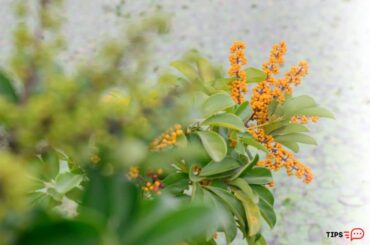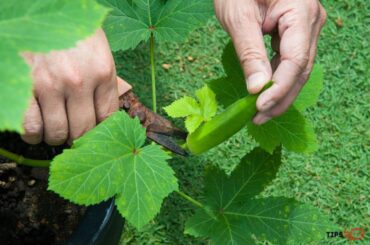What is eating my Persian shield? Mainly caterpillars, beetles and slugs Persian shield leaves. In this article I am going to describe major pest of Persian shield and how to control them. If you love your Persian shield as much as I do, bear with me for few minutes.

Persian shields is an unique plant in the plant world. Their leaves look like little armor shields. The leaves would comprise of a flashy purple iridescence and a silvery metallic sheen. These plants are endemic to Myanmar. If you live in hot climates, they will thrive as evergreen plants. Further, if you grow them in cooler climates, they will thrive well as annual plants.
Persian shield plants are quite popular among the gardeners as they are renowned for the winter purple blue blooms. They would be great picks for containers as well as for outdoor flower beds. The Persian shield is further renowned for their larger leaves.
To be precise, the leaves would be 4-7 inches in length and slightly serrated. They further consist of dark green veins too. Persian shield plants rise up to a maximum height of 4 feet in height and 3 feet in width.
What is eating my Persian shield?
Caterpillars
Caterpillars usually result in holes in the leaves, and they would first start to attack the leaf edges. However, the holes that caterpillars make look like the slugs’ snails infected holes. However, you cannot spot the mucus trails of the caterpillars. Further they would leave dark fecal droppings on the leaves. There are certain caterpillars which tend to attack the plants during the night.
Further you can find many of them holding on to the underside of the leaves particularly during the daytime. There is a wide array of caterpillars which would vary in sizes.
Beetles
Once the beetles infest the leaves, they would also result in holes in the foliage. It would be difficult to identify whether the beetles have caused them as beetle infected holes would also look like other pests infested holes. Once the beetles infest the plants, they would usually leave behind lace like skeletons on the leaves. Beetles would usually invade the Persian shield plants in large numbers.
They prefer to infest the plants, especially during warm sunny days. Once they invade these plants, you could see how your precious Persian shield plants become defoliated. They can consume both Persian shield leaves and flowers. They would usually not chew the leaves completely. For example, if your flea beetle attacks your plants, you could see those holes carrying a windowpane look.
However, if they keep infesting the leaves, the more you could spot the damage they do.
Slugs
Slugs are one of the most prominent and commonly spotted pests which tend to attack the Persian shield plants. They could also make your plants look ugly by creating holes. These little nasty creatures would usually feed on the center of the leaves. Consequently, you could spot the plants carrying larger irregular leaf holes.
There are a wider array of slugs and snails which would create holes in the Persian shield plants. Further those holes would be relatively smooth. Slimy silver trails are a common sight to spot if the slugs invaded your plants. further the snail mucus is yet another sign that you could emphasize the snails have attacked your plants. These are quite active during the nighttime.

Other pest of Persian shield
Spider mites
In addition to aforesaid, spider mites may tend to attack the Persian shield plants. Spider mites are small and you can spot them in red. They would usually make small webs specially on the places where the leaf stalks adjoin the plant. Spider mites prefer to feast on the dry dusty leaves. So, to prevent them from occurring in your plants, you need to ensure that you wipe the leaves with a damp cloth occasionally.
Ensure that you keep the plants hydrated so that spider mites would find it difficult to invade the plants. I don’t recommend using insecticides as these are mites and not insects. However, you may spray the leaves with neem oil as it would be fatal for these nasty creatures. Ensure that you apply it on the underside of the plants too. Keep treating them until you entirely get rid of them.
Fungus gnats
Fungal gnats are yet another tiny creature. They are dark in color and are flying insects. Fungus gnats’ larvae would mainly feed on the plant’s roots. They may result in the death of the plants especially when they attack the plants in big numbers. If you keep your Persian shield plants in moist soil, fungus gnats would feel welcome towards them and ultimately, they will end up infesting the plants.
To overcome them you can add some dish wash soap in the water and then apply.
Mealybugs
Mealybugs are small creatures which you could spot in white. You could spot them as small cottony white fuzz which would tend to appear on the stem and on the leaves. They would usually excrete the honeydew. Consequently, it would make the ants and the sooty mold attractive towards the plants. To treat them you could use neem oil. After that you could wash the sooty mold from the plants.
Aphids
Aphids are yet another small bug which would excrete honeydew. You could spot them mainly in green. However, you could spot them forming in pink, white gray and in black as well. Once the aphids attack the plants, it would attract the sooty mold also to the plants. You may use neem oil to treat the plants.
Ants
Ants could be a real menace for the Persian shield as they would defend the pests such as aphids and mealybugs from the predators. In fact, ants are big fans of the honeydew that aphids and mealybugs produce. I suggest using neem oil to treat the aphids and mealybugs so that it will help you to get rid of the ants as well.
Scale
Scales could also be a menace when you grow the Persian shield plants. They are small and ovular or circulate shaped creatures. Scales tend to infest the stems of the plants as well as the underneath of the leaves. You could spot them forming in a wide array of colors. However, you could commonly spot them forming in brown to yellow colors.
They would also excrete honeydew which would make the leaves glossy and shiny. I recommend conducting regular inspections on the plants so that you could identify these issues well in advance and treat them accordingly.
Thrips
Thrips would usually form in a yellow egg like larvae at first. They would usually appear on the upper part of the plants. However, as the time passes, you could see the minuscule black and white flies hanging around the plants, be it on the stems or on the flowers. Once the Persian shield plants suffer from a thrips attack, you could see yellow dark colored patches appearing on the plants.
Thrips are annoying as they would harm the cells in the leaves as well. As such it is critically important that you attend to it faster so that you could avoid further adverse repercussions. If you identify the Thrips have infested your plants, you need to quickly check whether they have spread to other plants as well and then treat your plants as appropriate.

Whitefly
Whiteflies are like small angels. At the beginning you could see eggs appearing on the leaves and on the stems. If you find any you need to remove them at the very moment you spot them. Further check on the neighboring plants also to see whether they have any whiteflies formed.
How to save my Persian shield?
First and foremost, the simplest thing you could do is to remove the bugs manually. You could see slugs; aphids usually crawl on the plants. So, in that case, you need to immediately pick them up and wash them away with water or with neem oil. Secondly ensure that you keep the garden clean and tidy. Keep the garden free of debris and all other weed types.
If you keep the debris and weeds in the garden, these pests will feel more welcome towards your plants. They would be perfect places for them to hide and multiply as well. In addition to that you need to use the right soil mix to grow them. To be more precise, you need to select a well-draining and well aerated fertile soil mix to grow the Persian shield.
You may consider using a compost manure, grit, gravel as they would enhance the fertility and the draining of the soil mix. Besides, you need to always keep the soil dry. Consequently, it would ensure that there is less potential for the bugs and the rest of other pests to invade the plants. Moreover, you may cover the plants from lightweight barriers to protect them from insects. Nets and PVC hoops would be a fine option here.
Furthermore, you may consider introducing garden friendly insects such as ladybugs and mantis. Besides, you may also grow pollen rich plants like Sunflowers, Roses so that the insects would pay more attention towards them. If you come across any bug infested plants, you need to immediately quarantine the plants so that it would badly impact on the healthy plants.
Apart from the above, you may also grow insect repelling plants such as mint, rosemary marigold in your garden. Their string fragrances would keep the bugs away from your precious Persian shield plants. I recommend using natural insect repellents also on the plants. For example, you could use garlic spray and neem oil to do this task. They would be fine options if you specially don’t prefer to use chemical insecticides or pesticides.
Finally, I suggest conducting a routine check up on a regular basis. It would allow you to identify the issues well in advance and eventually it would be easy for you to treat them as well. If you ever come across any discolored or damaged plant parts, you need to get rid of them as soon as you can. Further I suggest placing a crushed layer of eggshells which will make it difficult for the slugs to invade the plants.
Why is my Persian shield plant dying?
Persian shields may die if they run short of sufficient water and sufficient sunlight. On the other hand, excess sunlight and water would also be troublesome for the plants and result in the death of the plants. Apart from these, aforesaid pests’ attacks may also result in the death of the plants. Having said that, Persian shields can resist these pests’ attacks and diseases if you look after them well and handle them properly.
Conclusion
Persian shields are versatile, easy growing plants. Their vibrant foliage is the highlight of these plants. They would be handy to use for container gardening. Moreover, they would be great picks for houseplants as well. If you take care of the plants well, it is very unlikely that you will have to deal with the aforementioned pests or insects.
Read Next : Why Are Orchids Illegal To Trade?




